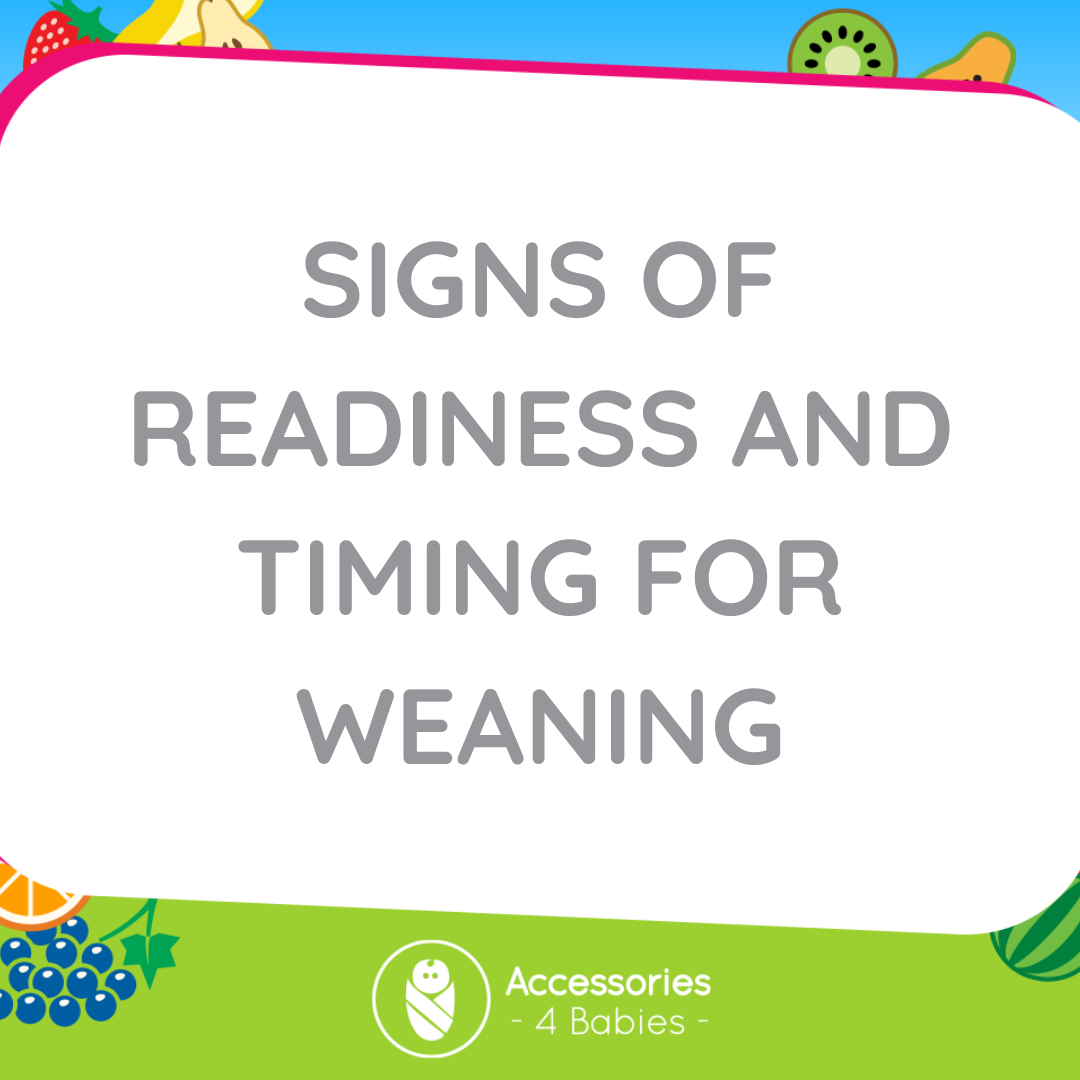
Listening to Your Baby: Signs of Readiness and Timing for Weaning
Weaning is a significant milestone in your baby’s journey, and knowing when they’re ready can make the process smoother. In this blog post, we’ll help you recognize the signs that indicate your baby is ready for weaning and offer guidance on the ideal timing.
Signs of Readiness for Weaning:
Head and Neck Control: Your baby can hold their head steady and upright, indicating better oral motor control.
Curiosity and Interest: Your baby displays interest in watching you eat, reaching for your food, or mimicking chewing motions.
Loss of Tongue Thrust Reflex: The automatic tongue-pushing reflex diminishes, allowing your baby to manage and swallow solids.
Ability to Sit Independently: Your baby can sit unsupported, a crucial skill for safe and effective self-feeding.
Increased Hunger: Your baby might show signs of increased appetite or demand more frequent feedings.
Timing for Weaning:
Around 6 Months: Most babies are developmentally ready for weaning around 6 months of age, as breast milk or formula alone may no longer meet their nutritional needs.
Trust Individual Readiness: While the 6-month mark is a guideline, it’s essential to observe your baby’s cues and readiness rather than adhering strictly to a timeline.
Avoiding Early Introduction: Introducing solids before 4 months can be associated with allergies and digestive issues, so waiting until around 6 months is generally recommended.
Guiding Your Baby’s Transition:
Gentle Introduction: Start with small amounts of a single-ingredient, easily digestible food to allow your baby to adjust.
Respecting Preferences: Recognize that your baby may take time to adapt to new tastes and textures, and it’s normal for them to have preferences.
Breastfeeding Continuation: Continue breastfeeding or formula feeding alongside solids to ensure your baby’s nutritional needs are met.
Progressive Increase: Gradually increase the variety and complexity of foods as your baby becomes more comfortable with eating.
Personalized Approach:
Unique Milestones: Every baby is different, so be attuned to your baby’s individual cues and readiness signals.
Avoid Pressure: Never force your baby to eat or follow a rigid schedule. Allow them to lead the way and eat according to their hunger and comfort.
Conclusion:
Weaning is a collaborative process between you and your baby. By recognizing their signs of readiness and tuning into their cues, you can embark on this journey at the right time, creating a positive and enjoyable experience for both of you.

Stockists





